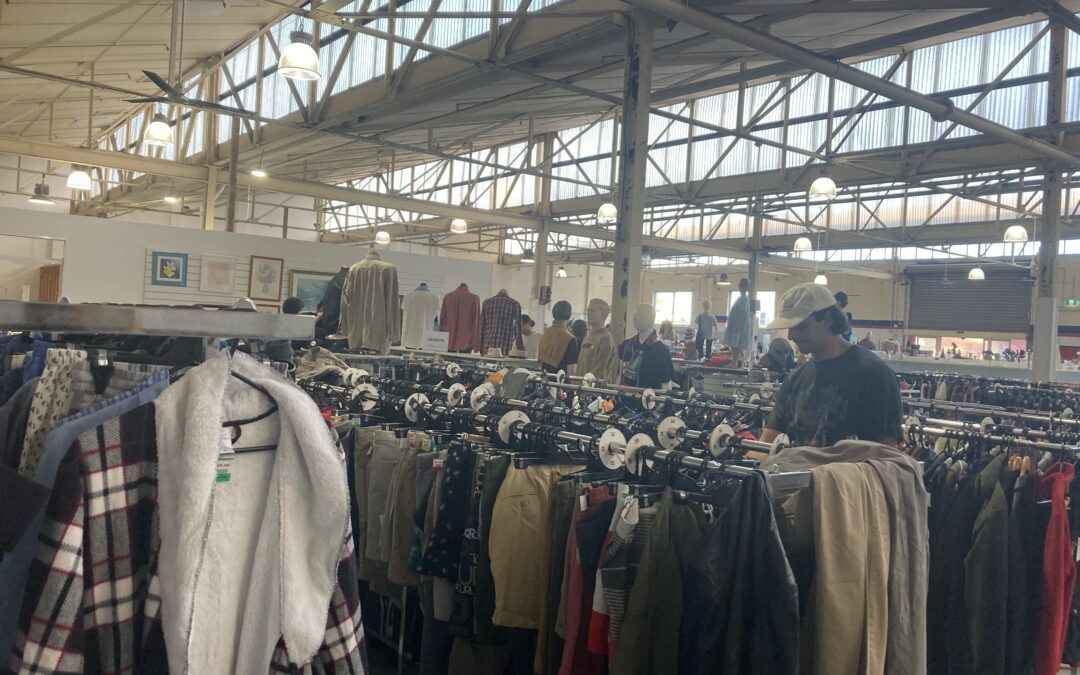A report released in March by clothing agency Reluv and Monash University has shown that Australian consumers are visiting resale businesses more than ever to combat a range of factors present in the fashion industry.
The study was conducted in late 2022, with 270 individuals and 53 businesses taking part in a survey that aimed to gain insight into current trends, opportunities and challenges in the resale market.
Reluv is an Australian online resale platform that aims to reduce the impact of the textile industry on the environment and those it claims are treated poorly working in factories around the world.
The report was the second of its kind and showed further upward trends in shoppers, particularly those born in Generation Z (mid 1990s-early 2010s), sourcing their clothing second-hand.
Source: Monash University/ Reluv Clothing
The survey shows that 73 per cent of respondents are actively purchasing second-hand fashion, with 20 per cent reporting that they have taken it up in the last three years. Respondents were also asked about their motives for shopping for preloved items, with environmental and economic factors being the most prominent.
Why are shoppers buying second-hand fashion by UOWTV
The survey also shows that 87 per cent of respondents visit op shops and other second-hand stores.
Green Connect is a social enterprise based in the Illawarra region and opened a second-hand store at the University of Wollongong campus. The enterprise aims to create jobs, reduce waste and grow fair food, with the funds from the shop supporting initiatives, such as a farm in Warrawong, and a range of wastage streams.
Green Connect’s UOW Op Shop Coordinator Emma Baselier said she believes that the benefits of the store has been evident within the first 18 months of opening.
“I think it’s fundamental to have something like an op shop on campus for multiple reasons,” Ms Baselier said.
“One of the main things is affordability. Being a student, you don’t have much money as a general rule, so being able to have a space and still buy the things you need but not break the bank.
“Another great incentive is the fact that we’re promoting sustainability, and that circular economy where you don’t have to buy new things to fit in.”
Ms Baselier also explained that the shopfront works as a mental health benefit for students and visitors on campus.
“What I’ve found by being on campus is a lot of students come in as a form of therapy. If they’re having a really stressful time they can come in and have a bit of a browse,” she said.
UOW students who attend the facility on campus, as well as other second-hand stores agreed and reflected the results of the study.
Engineering student Angie Aiken said that second-hand shopping is an experience as well as a valuable component of her life whilst completing her studies.
“It’s sort of a thrill, a little sensation you get through your whole body, and it’s always for a bargain price as well,” Ms Aiken said.
Former UOW student, Rosie, O’Brien, who studied Sustainable Communities, also expressed similar sentiments about visiting op-shops in search of treasures.
“From a young age my parents encouraged me to op shop, and now that I live out of home the price of clothing in retail shops means that I now pick up the majority of my wardrobe from op shops,” Ms O’Brien said.
With more attention being placed on preventing fast fashion, where items are produced with a focus on high volume, low price and quick turnover, students like Ms Aiken said she felt as though op-shopping was an easy and accessible option to combating environmental issue.
“Fast fashion makes me feel generic. When I go to an op shop and I find something unique, it is an extension of myself, and a way of putting yourself out there without saying anything, which is really good,” she said.
Wollongong also has a multitude of op shops that contribute to nationwide organisations, with The Salvation Army, St Vincent de Paul, Lifeline and Save the Children all operating stores around the city.
Trading out of these shopfronts have a major impact on their revenue, with the Salvation Army’s Annual Report for 2022 showing that these activities were topped only by governmental assistance in terms of funds raised.
Source: The Salvation Army Annual Report 2022
This income allows bodies like the Salvation Army to provide numerous youth services that aim to benefit the age group that research shows is visiting their shopfronts, most commonly in search of second-hand products. These services include assistance with employment and training, housing, education and drug and alcohol awareness programs.
2022 Salvos Store and Youth Outcomes by UOWTV
While Ms O’Brien isn’t currently studying, she fits the demographic that most often visit these stores, and has grown to be passionate about the practice.
“I think now is the time that buying second-hand becomes crucial,” she said.
“Op shops allow clothing to be recycled rather than thrown away, and any impact we can have on unnecessary waste makes a difference.”
With the second installment of Reluv’s annual Fashion Resale report released to the public, it’s expected that there will be further research in the future.

